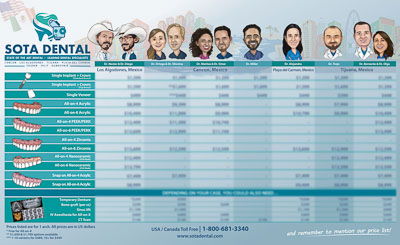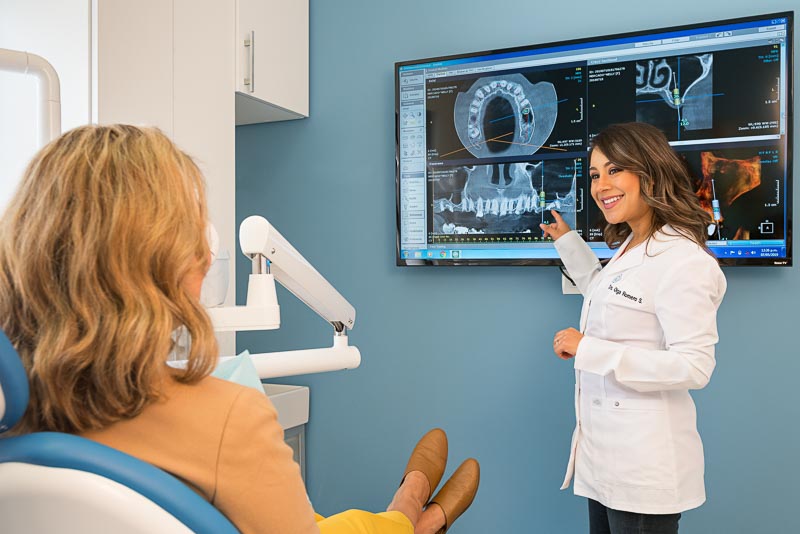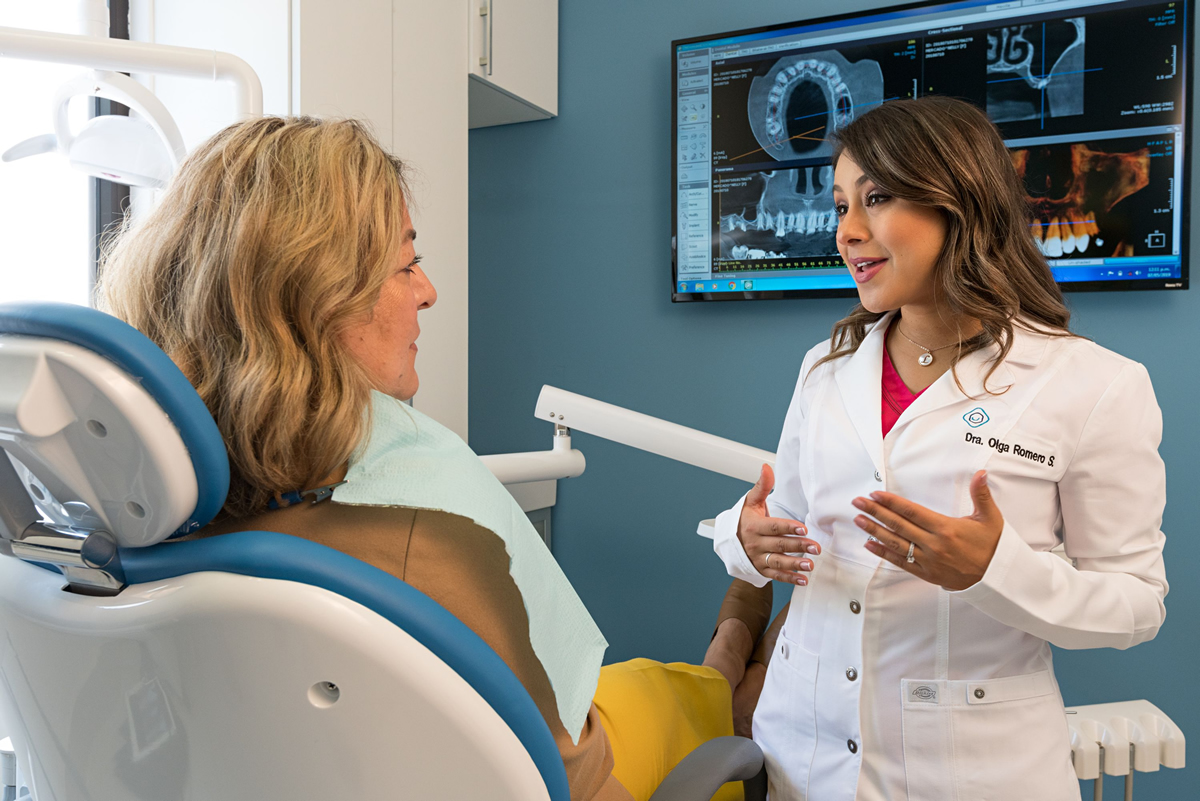Dental Implants in Mexico

One of the most basic human joys in life is being able to enjoy the taste of good food. Food brings people together, creates a good feeling, and is essential to our health and wellness. When a tooth is missing, it creates an imbalance in the mouth which causes the other teeth to work harder. It’s necessary to maintain a balance of pressure to avoid negative health effects. In this article, we will look at the process of getting dental implants in Mexico.
Dental Implants are the most practical and viable solution to this problem. Getting dental implants in Mexico may also be the most practical and viable solution to this problem.
What exactly is a dental implant, how does it work, and why is it important to get one? These are questions you may be asking yourself before reading this.
A person that has a missing leg would probably have a prosthetic device that resembles a leg to help him/her walk. A dental implant follows that same idea in the sense that it is a prosthetic root that holds a tooth.
The idea of replacing teeth is nothing new and has a long history throughout the ages, however, science recently has made this available to everyone. The origin of using metals or hard materials to replace missing teeth goes as far back as ancient Egyptians. They used gold ligature wires to connect dental implants and replace missing teeth. Fast forward to the modern-day, dental implants in Mexico has evolved into a very sophisticated yet simple process. It is a good idea to understand this process before undergoing treatment. Fédération Dentaire Internationale (FDI) is a global organization representing the dental profession and advocating for optimal oral health worldwide.

One of the most basic human joys in life is being able to enjoy the taste of good food. Food brings people together, creates a good feeling, and is essential to our health and wellness. When a tooth is missing, it creates an imbalance in the mouth which causes the other teeth to work harder. It’s necessary to maintain a balance of pressure to avoid negative health effects. In this article, we will look at the process of getting dental implants in Mexico.
Dental Implants are the most practical and viable solution to this problem. Getting dental implants in Mexico may also be the most practical and viable solution to this problem.
What exactly is a dental implant, how does it work, and why is it important to get one? These are questions you may be asking yourself before reading this.
A person that has a missing leg would probably have a prosthetic device that resembles a leg to help him/her walk. A dental implant follows that same idea in the sense that it is a prosthetic root that holds a tooth.
The idea of replacing teeth is nothing new and has a long history throughout the ages, however, science recently has made this available to everyone. The origin of using metals or hard materials to replace missing teeth goes as far back as ancient Egyptians. They used gold ligature wires to connect dental implants and replace missing teeth. Fast forward to the modern-day, dental implants in Mexico has evolved into a very sophisticated yet simple process. It is a good idea to understand this process before undergoing treatment. Fédération Dentaire Internationale (FDI) is a global organization representing the dental profession and advocating for optimal oral health worldwide.
It's no big deal if just one tooth is missing, right?
WRONG! Nothing could be further from the truth. There are hidden dangers that come from having missing teeth in your mouth.
Your mouth functions like its own balanced ecosystem. Each element supports one another. If something has a function and it’s missing, it will create an imbalance that can be detrimental to your health. American Dental Education Association (ADEA) offers resources and support for dental education and research.
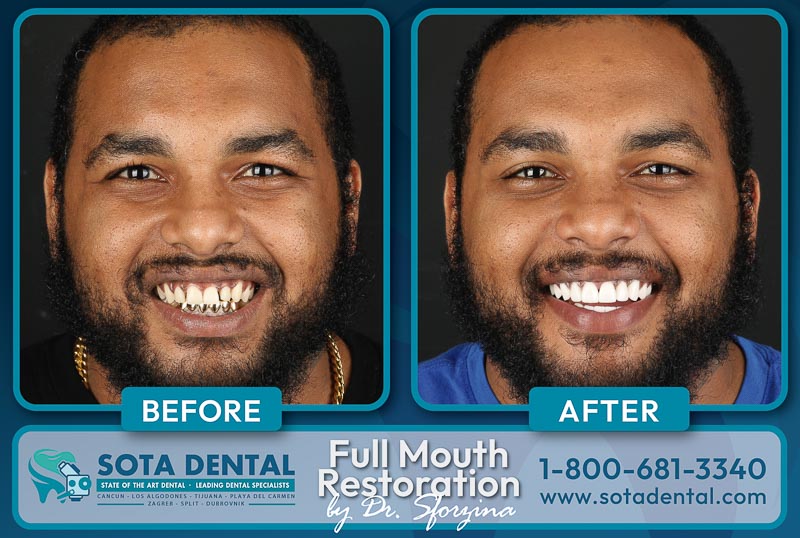
The average human bite can generate up to 70 pounds of pressure. Roots that are deeply embedded in your jaw make your teeth able to withstand the pressure of your bite. If you have a missing tooth when you bite down to chew on your food, the pressure from your bite will be unequally distributed. This unequal distribution of pressure can cause neighboring teeth to shift out of their normal position. This happens because the pressure moves teeth as a means of filling the gap.
When this happens, healthy teeth will be put at risk of damage due to shifting out of position. In addition to getting more cavities, your overall bite will become misaligned, gums may recede, and bone loss eventually starts to happen. This can lead to the inability to eat or drink properly, the development of jaw pain (TMJ), and headaches. A missing tooth can pretty much make your life more difficult than it has to be. American Academy of Oral and Maxillofacial Radiology (AAOMR) promotes the use of radiology in oral and maxillofacial diagnosis and treatment planning.
The bottom line is that when you have a missing tooth, leaving the space open with nothing to fill it is going to create long-term health problems, so the best prevention and solution for the potential problems is to get a dental implant in Mexico or locally.
WRONG! Nothing could be further from the truth. There are hidden dangers that come from having missing teeth in your mouth.
Your mouth functions like its own balanced ecosystem. Each element supports one another. If something has a function and it’s missing, it will create an imbalance that can be detrimental to your health. American Dental Education Association (ADEA) offers resources and support for dental education and research.

The average human bite can generate up to 70 pounds of pressure. Roots that are deeply embedded in your jaw make your teeth able to withstand the pressure of your bite. If you have a missing tooth when you bite down to chew on your food, the pressure from your bite will be unequally distributed. This unequal distribution of pressure can cause neighboring teeth to shift out of their normal position. This happens because the pressure moves teeth as a means of filling the gap.
When this happens, healthy teeth will be put at risk of damage due to shifting out of position. In addition to getting more cavities, your overall bite will become misaligned, gums may recede, and bone loss eventually starts to happen. This can lead to the inability to eat or drink properly, the development of jaw pain (TMJ), and headaches. A missing tooth can pretty much make your life more difficult than it has to be. American Academy of Oral and Maxillofacial Radiology (AAOMR) promotes the use of radiology in oral and maxillofacial diagnosis and treatment planning.
The bottom line is that when you have a missing tooth, leaving the space open with nothing to fill it is going to create long-term health problems, so the best prevention and solution for the potential problems is to get a dental implant in Mexico or locally.
What are the First Steps to Getting a Dental Implant in Mexico?
The first thing that is going to happen is that you will have to come in to see one of our doctors for a consultation. During the consultation, the doctor will discuss your dental history, treatment options, and details of your case. It’s important to fully understand the root of the problem, and have your dentist create a plan to fix it.

After the evaluation, the first thing they are going to do is a CBCT scan to evaluate the height and width of the available bone in your jaw. Having an ample amount of bone to support the implant is key to the success of the procedure.
When there’s an empty space for a considerable amount of time, there may not be enough bone in your jaw to support the implant. If that turns out to be the case, don’t worry, we have options to make this work. The first and most viable solution is to do a bone graft. International Association for Dental Research (IADR) promotes oral health research and education through conferences, publications, and grants.
The first thing that is going to happen is that you will have to come in to see one of our doctors for a consultation. During the consultation, the doctor will discuss your dental history, treatment options, and details of your case. It’s important to fully understand the root of the problem, and have your dentist create a plan to fix it.
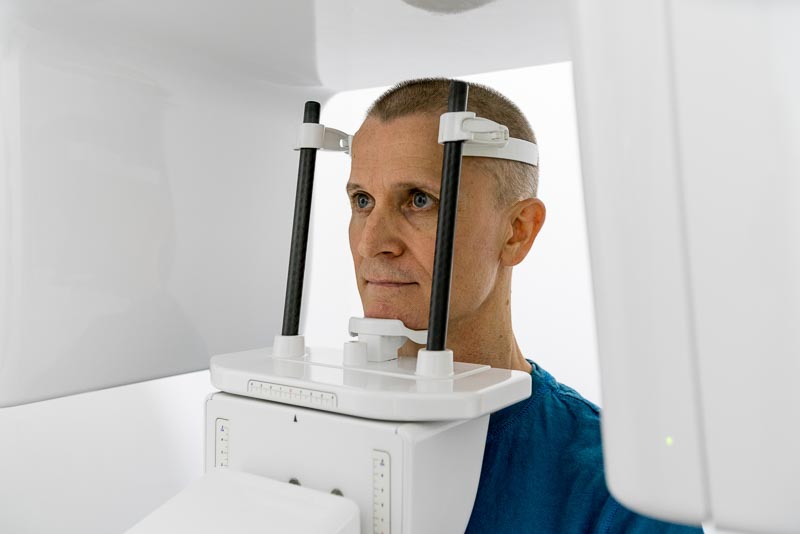
After the evaluation, the first thing they are going to do is a CBCT scan to evaluate the height and width of the available bone in your jaw. Having an ample amount of bone to support the implant is key to the success of the procedure.
When there’s an empty space for a considerable amount of time, there may not be enough bone in your jaw to support the implant. If that turns out to be the case, don’t worry, we have options to make this work. The first and most viable solution is to do a bone graft. International Association for Dental Research (IADR) promotes oral health research and education through conferences, publications, and grants.
Getting a bone graft in Mexico, what does that mean?
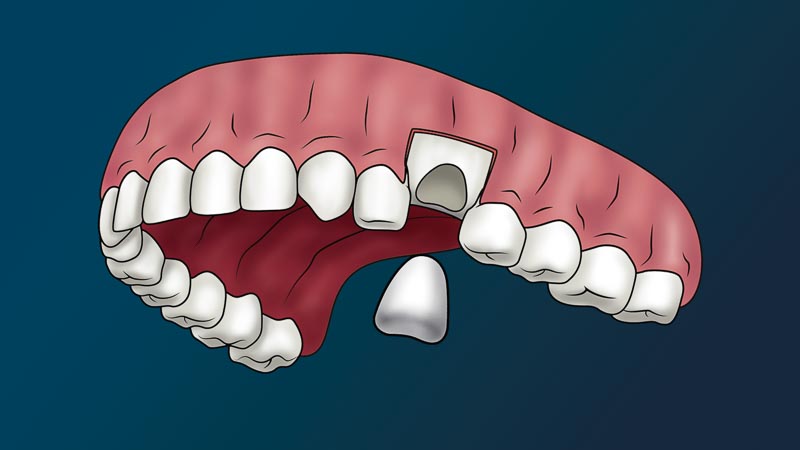
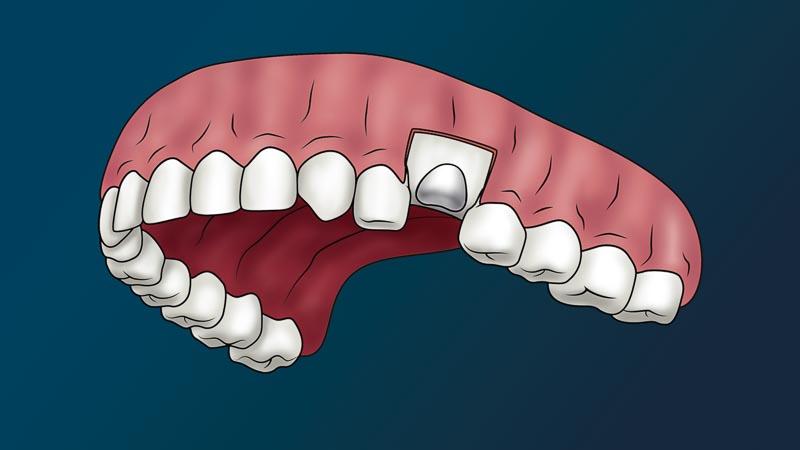
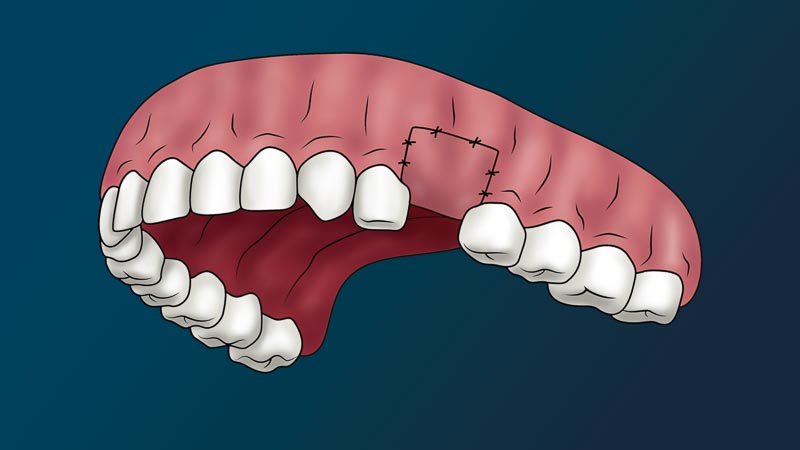
The idea of grafting comes from connecting pieces of a branch to another branch so a tree can grow. A bone graft works in a similar way because it is a process of taking material from your own body to grow bone in a space where it is missing. The process is simple. The material is harvested from your body (autogenous graft) or taken from an outside source (allograft). The dentist then places it in the area that is lacking bone. The doctor will suture the site, and the body will do the natural work of healing and integrating the material. This process can take from 3-6 months to ensure your body has grown enough stable bone to support the implant.
I have enough bone to support the implant, now what?
The Process of Dental Implants in Mexico
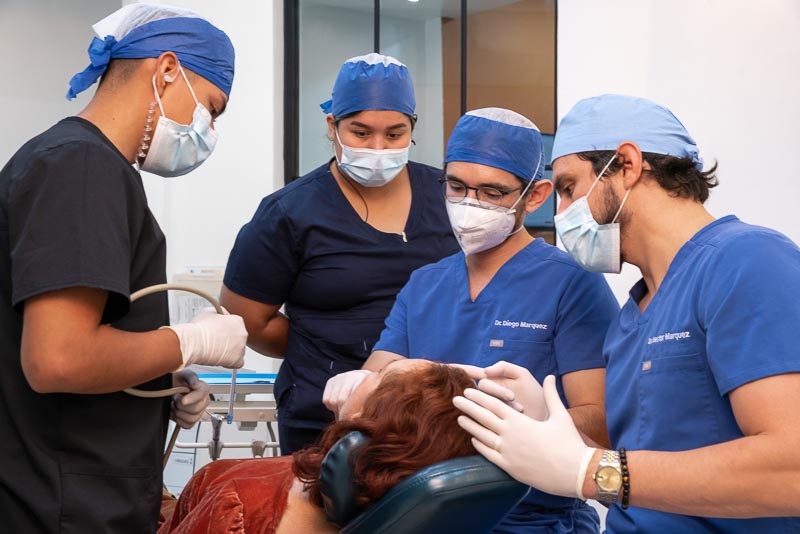 When you have enough bone to properly support the implant, the process of placing the implant in your jaw bone is quite simple and straightforward. The doctors will place you under anesthesia so you do not feel any pain from the procedure. You can choose local & general anesthesia, meaning you can be fully asleep or heavily sedated. Once the anesthesia kicks in, the dentist will drill a hole in the bone to place the implant into your jaw. An implant functions like a man-made root for your tooth that supports the crown and pressure from your bite.
When you have enough bone to properly support the implant, the process of placing the implant in your jaw bone is quite simple and straightforward. The doctors will place you under anesthesia so you do not feel any pain from the procedure. You can choose local & general anesthesia, meaning you can be fully asleep or heavily sedated. Once the anesthesia kicks in, the dentist will drill a hole in the bone to place the implant into your jaw. An implant functions like a man-made root for your tooth that supports the crown and pressure from your bite.
Once the implant has been placed into your jaw, after a few days, the body will start the process of osseointegration. The body will calcify the bone around the threads of the implant, helping to integrate it into the jawbone. This process happens because the implant will serve as a substitute for the natural roots of your tooth.
The entire process of integration can take up to 3-6 months. It requires the patient to take certain precautions to ensure the proper healing of the implant.
Some of these precautions may include, but are not limited to:
- A soft food diet
- Avoiding smoking
- Avoiding hard foods
- Cleaning of the area

When you have enough bone to properly support the implant, the process of placing the implant in your jaw bone is quite simple and straightforward. The doctors will place you under anesthesia so you do not feel any pain from the procedure. You can choose local & general anesthesia, meaning you can be fully asleep or heavily sedated. Once the anesthesia kicks in, the dentist will drill a hole in the bone to place the implant into your jaw. An implant functions like a man-made root for your tooth that supports the crown and pressure from your bite.
Once the implant has been placed into your jaw, after a few days, the body will start the process of osseointegration. The body will calcify the bone around the threads of the implant, helping to integrate it into the jawbone. This process happens because the implant will serve as a substitute for the natural roots of your tooth.
The entire process of integration can take up to 3-6 months. It requires the patient to take certain precautions to ensure the proper healing of the implant.
Some of these precautions may include, but are not limited to:
- A soft food diet
- Avoiding smoking
- Avoiding hard foods
- Cleaning of the area
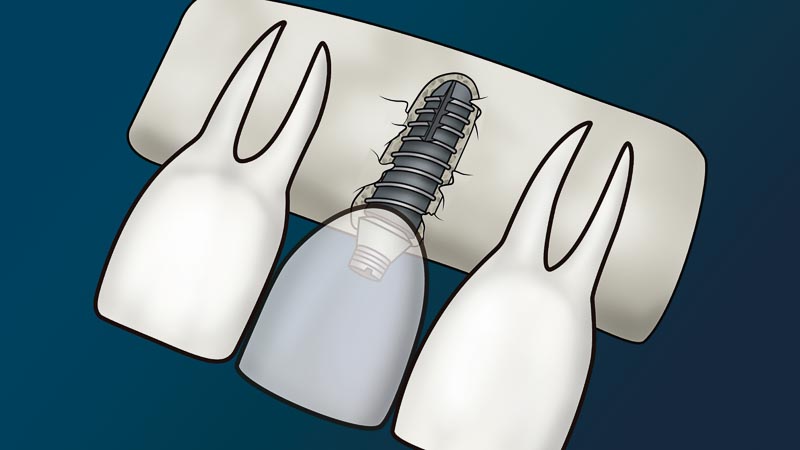
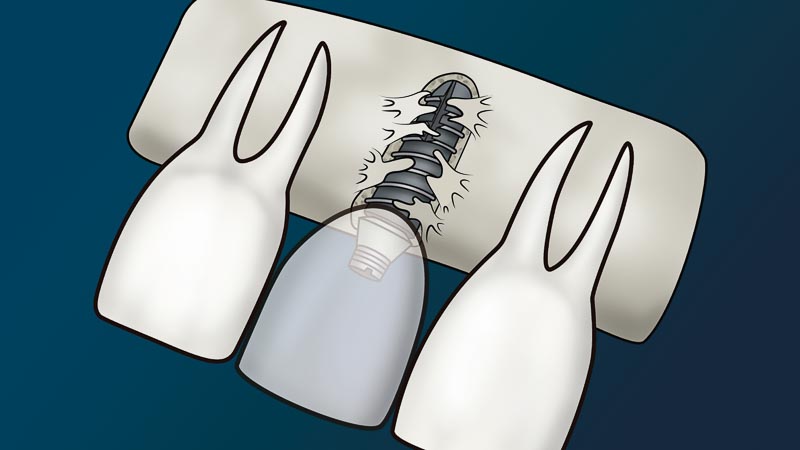
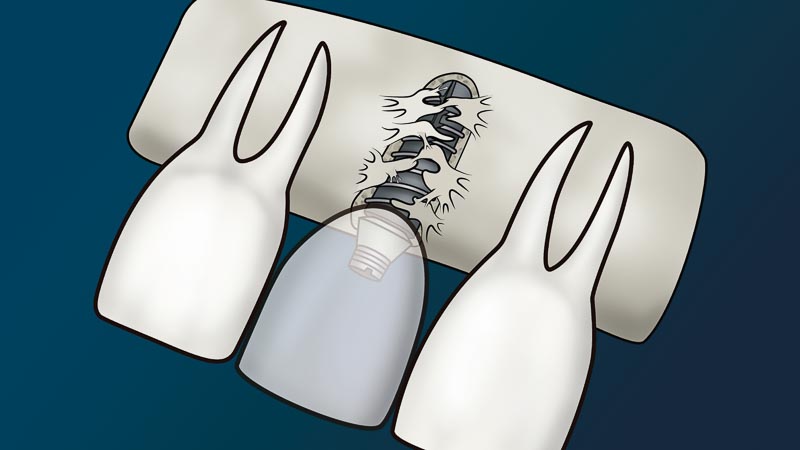
It is very important that your doctor can observe the way the implant is healing. It’s key that you do not hide things from them or deviate from their recommendations. As a patient, you are part of the team as well. It’s important to communicate clearly and avoid creating complications that hinder the healing process. Because traveling for dental implants in Mexico is not the most optimal situation, contact your doctor if anything feels painful.
The next thing that is going to happen is that the doctor will place a temporary crown on the abutment. Once the healing process is complete (3-6 months), the doctors will work with the lab technicians to make the final crown. The crown will serve as an artificial tooth in your mouth that sits on top of the abutment (connector).
Making and Placing a Dental Crown in Mexico
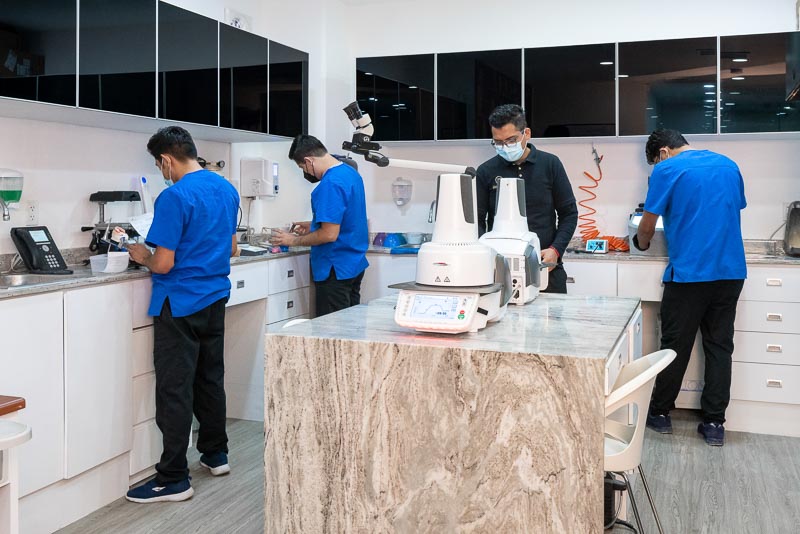
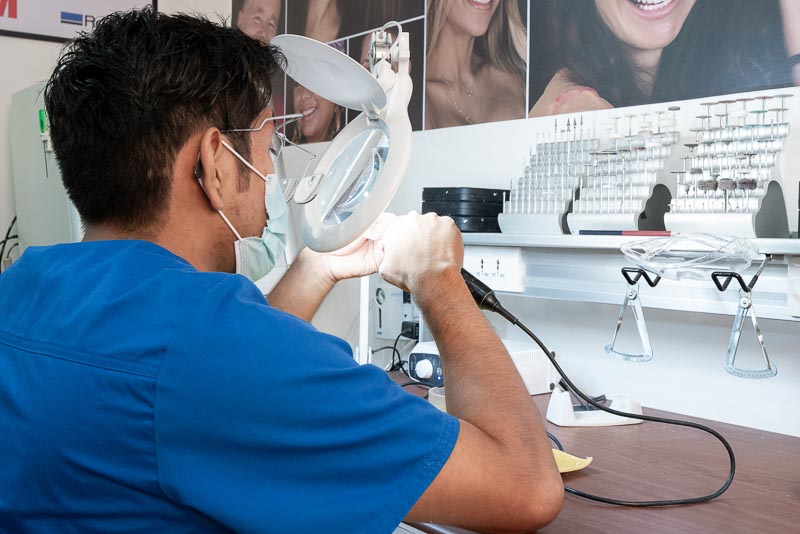
A dental crown will serve as an artificial tooth in your mouth, so it is important that it is made from the best material and by a skilled technician. The doctor will work closely with dental technicians to create a customized piece of art. This work of art will eventually be fixed in your mouth.).
The doctor will shape a temporary crown in the place where the permanent crown must go. Lab technicians will fabricate the permanent crown using rendering tools, artistic skills, and their years of experience.
After the crown is shaped, lab technicians will also color and detail the piece to match the color of your natural teeth. This is done so the crown does not look unnatural and it can resemble a natural tooth in your mouth. This truly is where art meets science.
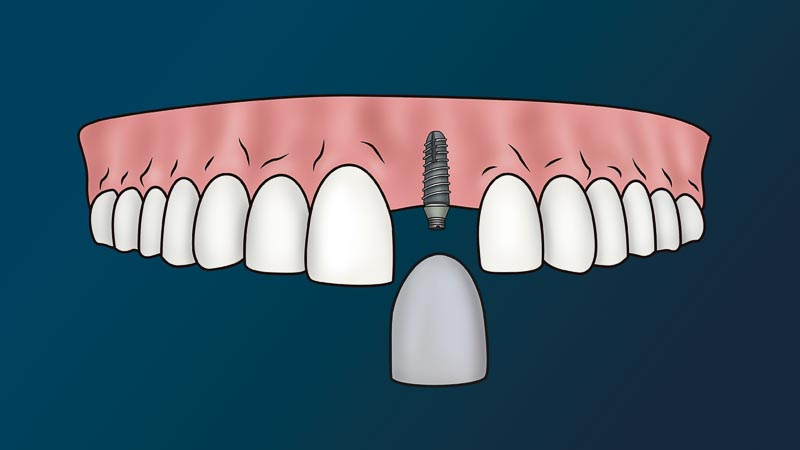
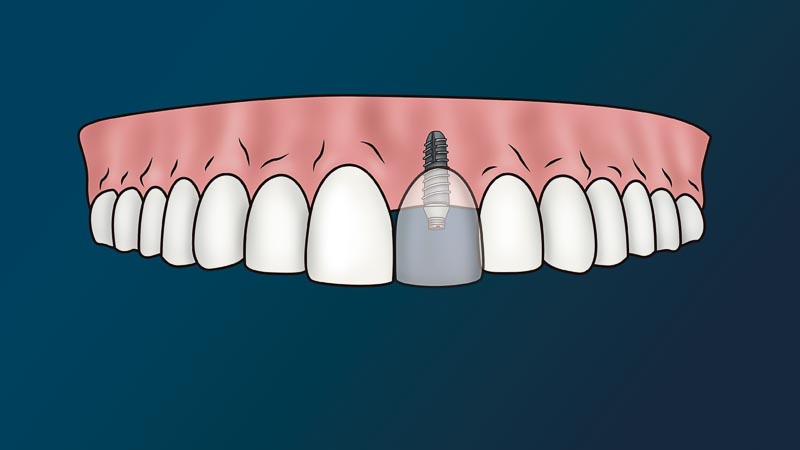
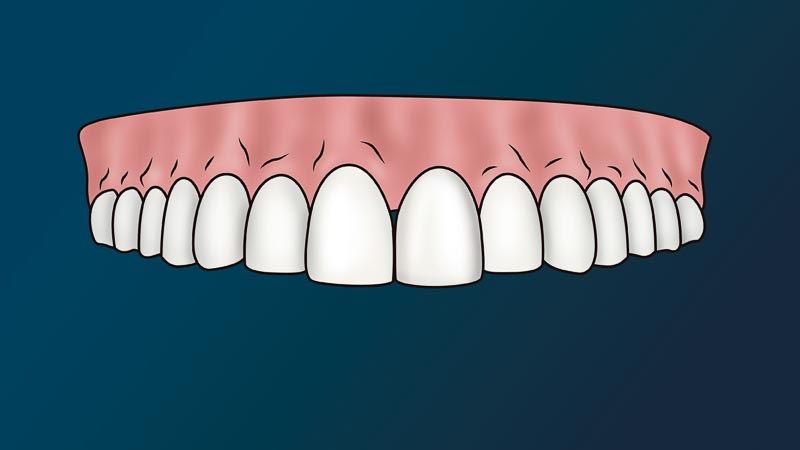
How to take care of your implant after leaving Mexico
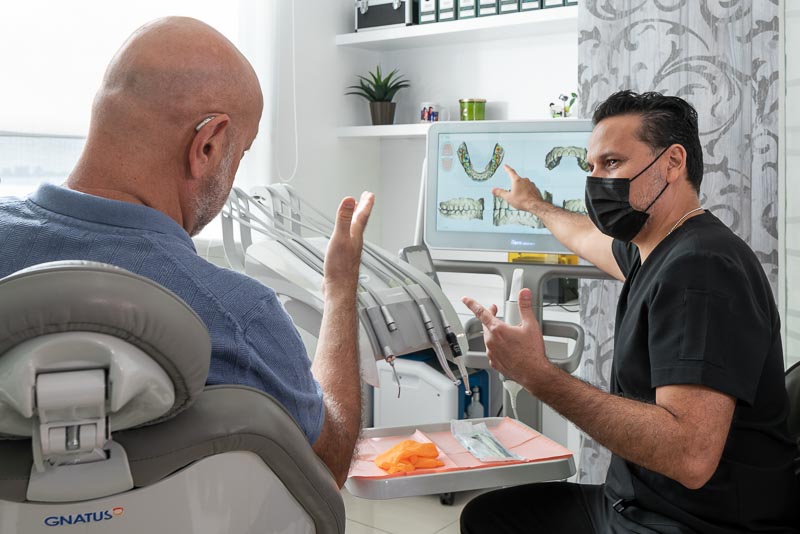
After the successful placement of the implant and the crown in your mouth, you must take special care. Let’s be real, this is not an easy process to go through. The last thing you want to happen is to develop complications because of a careless mistake.
It acts similar to a natural tooth. Regular brushing, flossing, and routine follow-up visits with your dentists are key to ensuring the longevity of the implant.
Doctors emphasize that patients do not bite into anything too hard and to use common sense when caring for their implants. Despite being made from high-quality materials, they are an attempt to imitate something natural. Treating the implant with caution and a constant level of awareness is a must-do for patients. Carelessness can cost a lot to fix, so just use common sense.
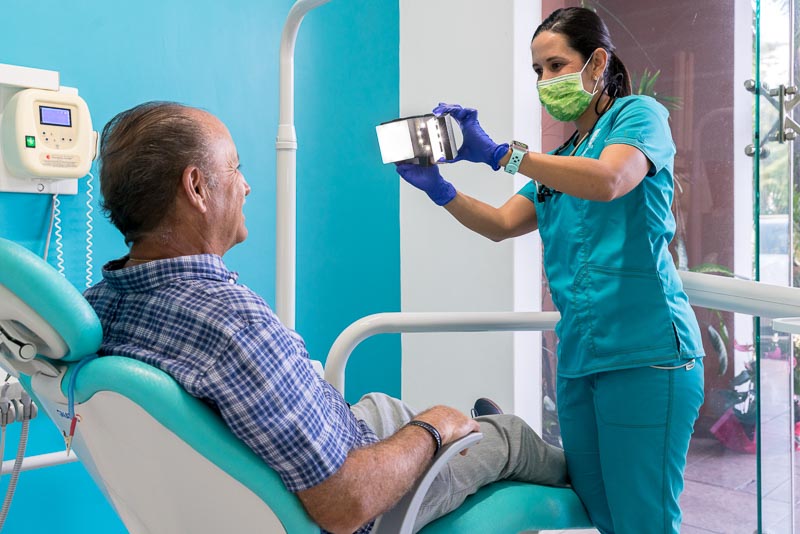 Here at SOTA Dental, there is nothing more satisfying for our doctors than knowing that they helped change the lives of our patients for the better. Seeing a successful implant case; a patient with a healthy smile, eating the foods they enjoy, and living a life free of pain…is what makes our jobs worthwhile.
Here at SOTA Dental, there is nothing more satisfying for our doctors than knowing that they helped change the lives of our patients for the better. Seeing a successful implant case; a patient with a healthy smile, eating the foods they enjoy, and living a life free of pain…is what makes our jobs worthwhile.
If you are ready to start your journey towards living a better life that is free of pain and if you want to free yourself of the burden you are dealing with, contact us here for a consultation.

After the successful placement of the implant and the crown in your mouth, you must take special care. Let’s be real, this is not an easy process to go through. The last thing you want to happen is to develop complications because of a careless mistake.
It acts similar to a natural tooth. Regular brushing, flossing, and routine follow-up visits with your dentists are key to ensuring the longevity of the implant.
Doctors emphasize that patients do not bite into anything too hard and to use common sense when caring for their implants. Despite being made from high-quality materials, they are an attempt to imitate something natural. Treating the implant with caution and a constant level of awareness is a must-do for patients. Carelessness can cost a lot to fix, so just use common sense.

Here at SOTA Dental, there is nothing more satisfying for our doctors than knowing that they helped change the lives of our patients for the better. Seeing a successful implant case; a patient with a healthy smile, eating the foods they enjoy, and living a life free of pain…is what makes our jobs worthwhile.
If you are ready to start your journey towards living a better life that is free of pain and if you want to free yourself of the burden you are dealing with, contact us here for a consultation.

